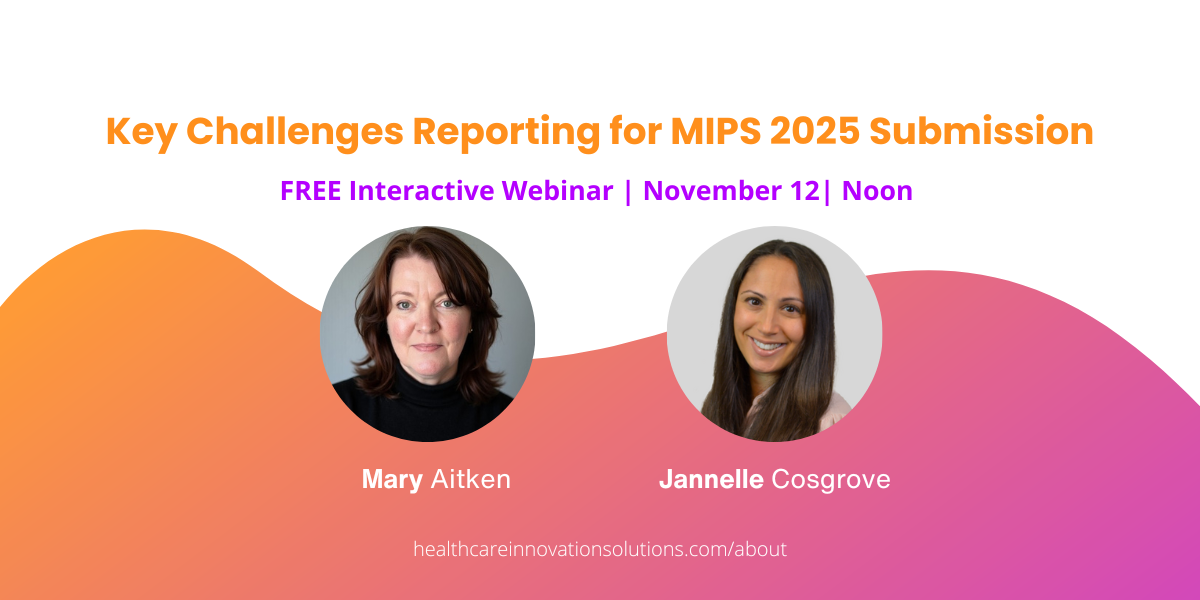Successfully navigating MIPS reporting has never been more challenging or more critical. With evolving CMS requirements, shifting benchmarks, and the risk of financial penalties for underperformance, practices need a clear strategy to protect revenue and maximize incentives. Join two of our most seasoned MIPS experts, Mary Aitken RN BSN and Jannelle Cosgrove, on November 12th at 12pm ET as they discuss how provider practices can develop a successful submission for 2025. This informational and conversational webinar will guide you through the most common pitfalls in MIPS reporting for 2025, from incomplete data and technical barriers to regulatory complexity and submission logistics.
Our MIPS experts will share practical insights and proven strategies to simplify reporting, improve accuracy, and reduce administrative burden. Whether you are a part of a healthcare system or a provider practice, you’ll leave with actionable steps to strengthen compliance, boost performance scores, and safeguard your reimbursement. Don’t miss this opportunity to secure your spot—register today!
1. Data Collection & Accuracy
- Aggregating data across multiple EHRs, registries, and care settings.
- Ensuring coding accuracy (CPT, ICD-10, SNOMED) to meet measure requirements.
- Handling incomplete or missing data.
2. Measure Selection & Reporting Strategy
- Choosing the right quality measures that align with the practice’s specialties and patient population.
- Understanding benchmarks that change annually.
- Balancing measures that maximize performance versus those easiest to report.
3. Interoperability & Technical Barriers
- Extracting and normalizing data from disparate systems (EHR, billing, claims).
- Dealing with vendor limitations or delays in generating MIPS-compliant reports.
4. Regulatory Complexity
- Interpreting evolving CMS rules, scoring methodologies, and submission requirements.
- Adjusting to annual program changes (e.g., new measures, reweighting of performance categories).
5. Submission Logistics
- Choosing the correct submission method (EHR direct, registry, QCDR, CMS web interface, claims).
- Managing file formats, validation errors, and data transmission failures.
- Ensuring submission is complete and confirmed before the deadline.
6. Resource Constraints
- Significant time and administrative burden, especially for smaller practices.
- Lack of internal expertise to optimize scoring and compliance.
- Competing priorities alongside patient care and other reporting requirements.
7. Risk of Financial Impact
- Penalties for non-submission or poor performance (negative payment adjustments).
- Pressure to achieve high scores to maximize incentives while avoiding errors that reduce points.
